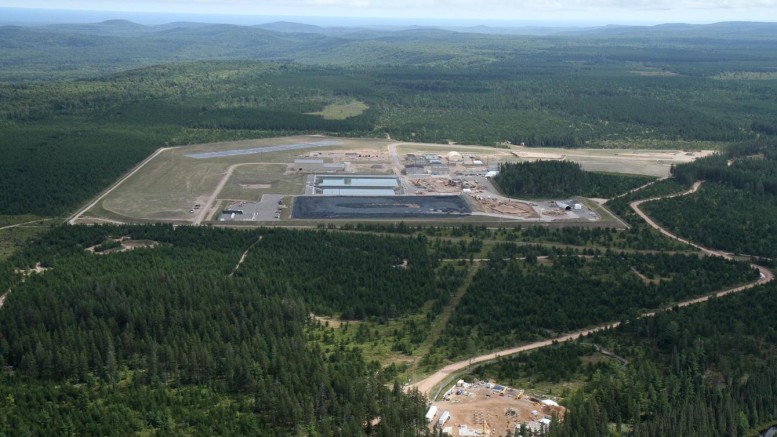VANCOUVER — Lundin Mining’s (TSX: LUN; US-OTC: LUNMF) high-grade Eagle East nickel-copper discovery is on track to extend the life of its Eagle mine in western Marquette County of Michigan’s Upper Peninsula. The company has tabled a maiden resource and preliminary economic assessment (PEA) on the satellite mineralization, which it expects will “significantly increase” nickel and copper production at the operation by 2020.
Lundin acquired Eagle in a US$325-million deal with Rio Tinto (NYSE: RIO) in June 2013. The project was in an advanced-development state at the time, and carried an eight-year mine life.
According to Lundin’s 2015 resource and reserve statements, Eagle hosts 4.5 million proven and probable tonnes grading 2.9% nickel and 2.4% copper, and 129,000 contained tonnes nickel and 109,000 contained tonnes copper.

Lundin Mining’s Eagle nickel-copper mine complex in the Michigamme Township, Marquette County, Michigan.
The mine’s production this year could total between 21,000 and 24,000 tonnes nickel, and 20,000 and 23,000 tonnes copper.
After the acquisition, Lundin management commented on Eagle East’s significant potential, followed up with and 35,000 metres of diamond drilling in 67 holes to locate and define the deposit.
“We continue to be excited about what we’re hitting, with high grade at depth a couple kilometres away,” president and CEO Paul Conibear said during a first-quarter conference call.
Lundin has seven rigs on the property: five are infill-drilling on the Eagle East deposit; one is step-out drilling and deep drilling down the feeder pipe to see if it can pick up more on Eagle East; and the seventh rig is drilling new targets.
The inferred resource at Eagle East stands at 1.2 million tonnes at 5.2% nickel, 4.3% copper, 0.5 gram gold per tonne, 15.8 grams silver per tonne, 1.7 grams platinum per tonne and 1.3 grams palladium per tonne. The deposit is now defined over 480 metres long, 40 metres to 50 metres high, and 20 metres to 25 metres wide.
Exploration is ongoing to define any mineralization to the north and east, while drilling also found a “deeper-seated target” down-dip in a vertical gabbro complex in basements rocks.

Long section showing the outline of Eagle East mineralization and the deep target area of continued drilling. Credit: Lundin Mining.
According to Lundin’s PEA, access to Eagle East would require a spiral ramp to be developed from the bottom of the mine, while preliminary [metallurgical] test work shows no modifications would be needed to the Humboldt processing plant or “current concentrate-marketing arrangements.”
The company says that pre-production capital at Eagle East would be US$95 million, with most earmarked for ramp access, ventilation raises, level development and new mine equipment.
The PEA assumes that building the access ramp to Eagle East would begin in the third quarter, which would lead to production in the first quarter of 2020.
The high-grade mineralization would be blended with the lower-grade material from the main orebody, which would “significantly” boost nickel and copper production. The current resource is expected to extend the mine life by three years.
Based on metal prices of US$8 per lb. nickel and US$3 per lb. copper, the Eagle East plan features a US$181-million after-tax net present value at an 8% discount rate, and a 40% internal rate of return. The payback period would be one year, while average combined by-product cash costs during the Eagle and Eagle East production period are an estimated US$1.83 per lb. nickel.
Lundin has already seen enough to move Eagle East into its next development stage, with a feasibility study expected by year-end and ramp development expected in July. The company has allocated another US$12 million to the project for 2016.
Lundin shares have traded in a 52-week range of $2.98 to $5.26 per share, and closed at $4.71 at press time. The company has 720 million shares outstanding for a $3.5-billion market capitalization.
Scotiabank analyst Orest Wowkodaw said the PEA is a “modest positive for [Lundin] shares,” and added that the company offers “excellent exposure to [copper-zinc-nickel] markets at a relatively low development and balance-sheet risk profile, and an attractive valuation.” Scotiabank has a $5.50-per-share, one-year price target on the company.


Be the first to comment on "Lundin Mining discovery to extend Eagle mine life"